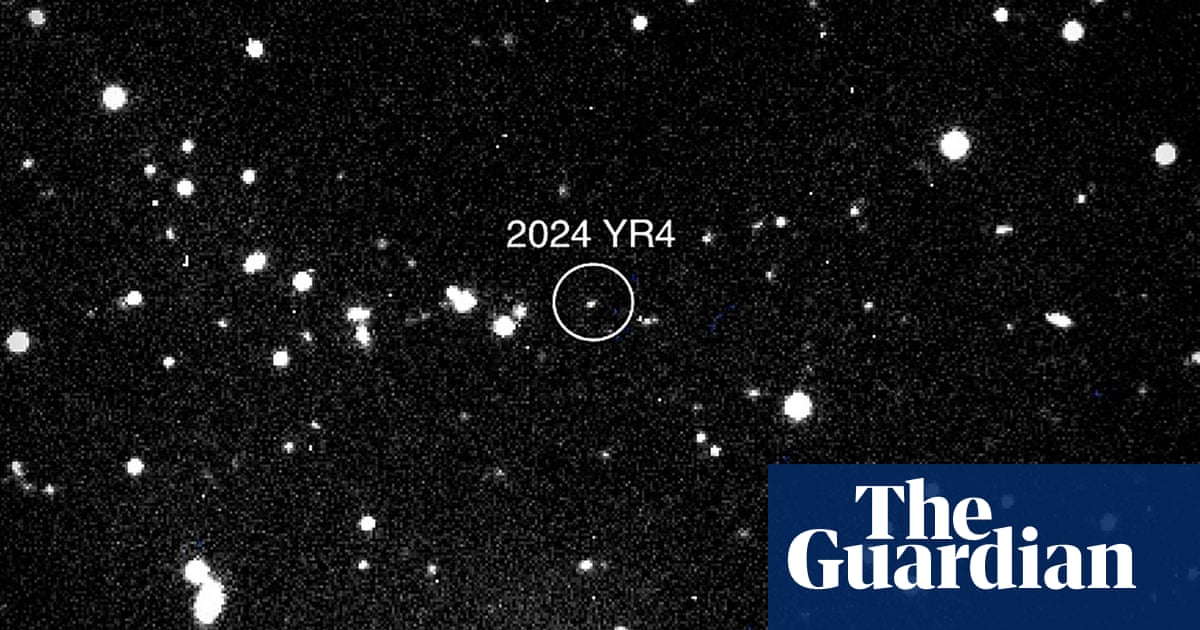It was a discovery that lead to panic-inducing headlines: a giant asteroid found to be hurtling towards Earth that, while unlikely to wipe out life, could do some serious damage.
But now the world can breathe a sigh of relief. After the odds of a future collision rose earlier this year, the likelihood of an impact is now so low as to be negligible.
At about 40–90 metres (130-300ft) in width, asteroid 2024 YR4 is far smaller than that which ended the reign of the dinosaurs – a body that was about six to nine miles (10-15km) wide. However, an impact with Earth could still have caused death and destruction: the asteroid was deemed capable of releasing energy equivalent to 7.8 megatonnes of TNT explosive.
As a result, a planetary defence response was triggered, beginning with experts closely tracking the trajectory of the asteroid. Initially the likelihood of an impact in 2032 rose, reaching 3.1% on 18 February this year, but data from Nasa reveals it is now 0.0017%.
In other words, there is 99.9983% chance the asteroid will miss Earth. Indeed, the “city-killing” asteroid currently ranks zero on the Torino impact hazard scale that ranges from a no-risk nought to a global-catastrophe 10.
The change was not unexpected: as the European Space Agency previously pointed out, an asteroid’s impact probability often rises before dropping off as additional observations are made.
“This asteroid was a good demonstration of why we have these procedures, and of them working as expected: a higher than normal – but still very low – risk triggered further observations and planning, and these observations let us rule out an impact,” said Colin Snodgrass, a professor of planetary astronomy at the University of Edinburgh.
Snodgrass added that such alerts were likely to become more common. “We should get used to alerts like this – as the new Vera Rubin Observatory starts scanning the skies later this year we will find many more asteroids, and some will no doubt require further attention to rule out impacts,” he said.
“This shouldn’t be a cause for alarm – it is a sign that our technology is improving and we are doing better at discovering asteroids, and means that, if we do find one coming towards Earth, we have a better chance of finding it with enough warning time to do something about it.”
Article by:Source: Nicola Davis Science correspondent














